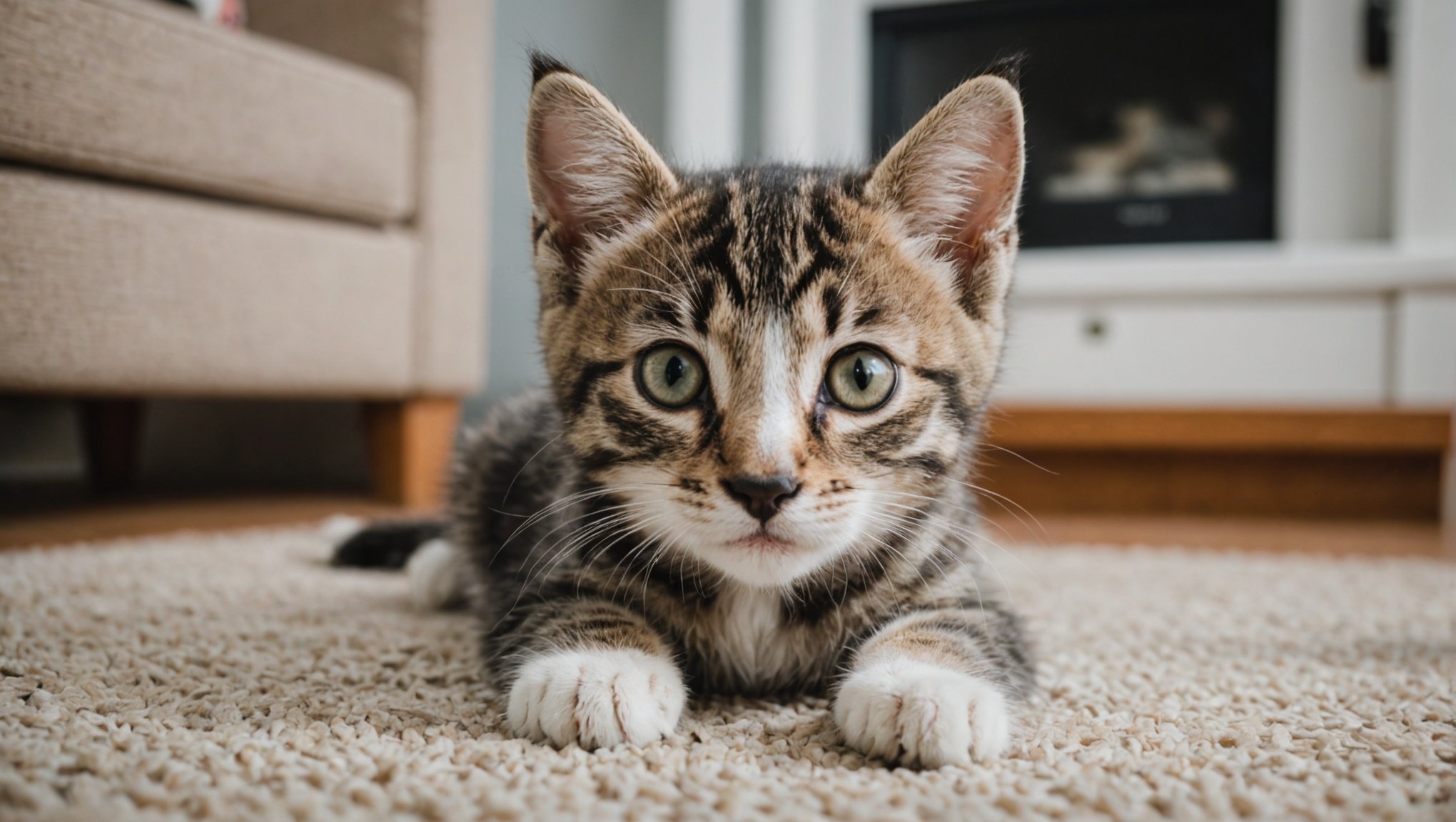Understanding the Challenges of Introducing a Kitten to Dogs
Integrating a kitten into a dog-dominated household can present various challenges. Initially, it is crucial to be aware of potential dog behaviors that may impact the introduction process. Dogs may exhibit territorial instincts, such as barking or growling, which could intimidate the newcomer.
Before the introduction, assess the temperaments of both the kitten and the dogs. Understanding your pets’ personalities is essential in predicting any adverse reactions and planning accordingly. For example, a dog with a high prey drive might view a kitten as a chase toy, while a timid dog could become stressed by a kitten’s energetic nature.
Also to see : Crafting an Enriching and Secure Habitat for Your Pet Hamster: Tips and Tricks
Common challenges in pet integration include jealousy from existing pets and the fear a kitten might feel in a new environment. To mitigate these, introduce the pets in a controlled manner, gradually increasing their interactions over time. Supervised meetings in neutral spaces can reduce territorial behavior, helping each pet to feel safe and accepted.
Strategies for successful kitten introductions heavily rely on patience and close observation of behaviors, creating a harmonious environment for both pets.
Additional reading : Crafting a Wholesome Diet for Your Senior Ferret: A Complete Guide to Nutrient-Rich Nutrition
Preparation for the New Arrival
Bringing a new kitten home is an exciting yet challenging time. Preparing for a kitten involves setting up a welcoming environment. Start by designating a safe space where your new furry friend can feel comfortable and secure. This area should be quiet, away from any household bustle, and contain essentials like a litter box, food, and water dishes.
Pet-proofing your home is equally important to prevent any mishaps. Examine your space for hazards such as electrical cords, small objects, or toxic plants. Ensuring these are out of reach helps protect your kitten and keeps your home safe too.
Consider investing in necessary supplies before the kitten arrives. Recommended items include:
- Feeding bowls that are size-appropriate
- Comfortable bedding
- Safe toys
- A scratching post
These preparations not only make the transition smoother for the kitten but also provide you peace of mind. Creating a dedicated safe haven and eliminating potential dangers lay the groundwork for a happy, healthy pet experience. By gathering essential items beforehand, you further ease this important transition.
Introduction Strategies
Introducing a new pet to your household can be challenging, yet it is essential for ensuring harmony among furry companions. A gradual introduction is often the most effective method, as it allows both pets to acclimate without overwhelming stress.
Initial Introductions
To promote a safe and controlled introduction, it is crucial to manage initial reactions and keep both pets calm. Techniques such as using barriers or leashes can help, allowing the animals to observe one another without direct contact. Equally important is scent exchange. By swapping blankets or toys between pets, they can become familiar with each other’s scent prior to face-to-face meetings, lessening any initial shock.
Supervised Interactions
Facilitating supervised play sessions is a key strategy, providing opportunities for positive interactions. Observing signs of comfort, like relaxed body language, or stress, such as aggression or withdrawal, will guide you in adjusting interaction levels. Gradually increase these sessions as both pets demonstrate growing comfort with each other.
Separate Spaces
Each pet should have its own retreat space, ensuring comfort and reducing the chance of territorial disputes. Separate feeding and sleeping areas are beneficial, creating boundaries that promote peace. This separation plays a vital role in reducing anxiety and helping pets adapt to sharing their environment.
Monitoring Behaviour
Introducing a new pet to an existing one involves observing the pet behaviour monitoring process closely. Essential behaviours to monitor include the socialisation process between the kitten and the dog. Watch for body language and sounds, such as the dog’s wagging tail or the kitten’s relaxed posture, which indicate a positive interaction.
However, identifying behavioural signs like stress or aggression is crucial. Shivering, growling, or flattening ears can indicate discomfort. Address these concerns by separating the pets temporarily, providing them with separate spaces to retreat to when needed.
Equally important is the use of positive reinforcement during these interactions. Reward calm behaviour with treats or affection to encourage them, reinforcing desired actions and reducing anxiety.
Understanding and addressing behavioural signs ensures a smoother integration process. Patience and careful pet behaviour monitoring can aid in the successful socialisation process, fostering a harmonious environment for both the kitten and the dog.
Enrichment Activities for a Balanced Home
Providing pet enrichment through interactive play and shared activities enhances a harmonious environment. Engaging in play not only strengthens bonds but also supports the mental stimulation of pets. Understanding individual needs and creating a tailored experience fosters a healthy relationship among pets.
Interactive Play for Dogs and Kittens
Interactive play can involve toys and games perfect for both dogs and kittens. Consider toys like fetch balls for dogs and feather wands for kittens that encourage both physical exercise and socialization. Watch-and-learn playtime can help with socialization, teaching pets to understand boundaries and respond appropriately to social cues. Integrate play into their daily routine to establish expected patterns of behaviour and reduce stress.
Enrichment Tips for Individual Needs
Tailor activities to suit each pet’s unique personality and energy level. This might include agility courses for active pets or puzzle toys for those who need mental challenge. Mental stimulation is crucial in preventing boredom-induced behaviours such as excessive barking or scratching. Incorporating short training sessions as part of enrichment can improve obedience and keep pets mentally alert.
Observation of Play Dynamics
Observe play sessions to differentiate between healthy play and potential conflicts. Healthy play often includes voluntary engagement and respectful interactions. Develop strategies to redirect unwanted behaviours using toys or commands. Encouraging positive interactions through collaborative activities can create a harmonious environment where both pets thrive.
Long-term Coexistence Strategies
Addressing long-term pet harmony requires a commitment to consistent coexistence tips and ongoing education. One critical component is establishing protocols for daily interactions. Creating structured routines helps pets understand expectations, which fosters a peaceful environment. Consider setting specific times for feeding and play to avoid confusion.
Ongoing training plays a pivotal role in maintaining harmony. Reinforce positive behaviours with treats or affection, guiding pets to react appropriately in various situations. This consistency prevents the resurgence of unwelcome habits.
Regular assessments of household dynamics are equally vital. As pets mature or circumstances change, revisiting and adjusting these strategies ensures ongoing success. Keep an eye on any stress signals or alterations in behaviour.
The commitment to these coexistence strategies supports a lifelong bond, prioritising happiness for all residents.






